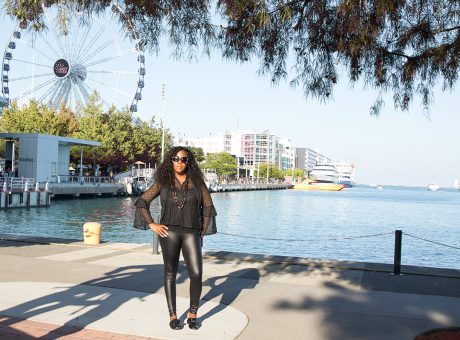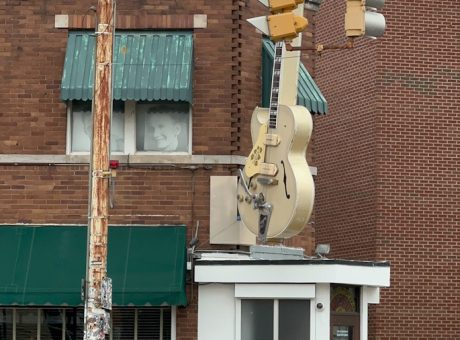
VATICAN MUSEUM: 20 THINGS TO SEE
If you are planning a trip to Rome, visiting the Vatican Museum must be at the top of your list of things to do. The Vatican Museum is enriched with historical events. Michaelangelo’s designs and paintings in the Sistine Chapel and other rooms at the Vatican Museum are among the very popular attractions at the museum.
THE MAPS ROOM
1 of 20
Past the Tapestries hall, you will enter the Maps Room. The ceiling in this hall is intricately detailed with beautiful art. The maps themselves on the walls depict extremely detailed maps painted onto the walls in the 1500s. It is the largest collection of geographical paintings in history, and truly a sight to behold. Make sure to stop and look at some of these paintings, as they really are beautiful and awe-inspiring.


SISTINE CHAPEL
2 of 20
The most popular room in the Vatican Museum that people, from all over the world make haste to see when they arrive in Rome, is the Sistine Chapel. The ceiling was commissioned by Pope Julius II. Together with the ‘Last Judgement’, both painted by Michelangelo, they are a spectacle. Fundamentally, in his work in the chapel, Michelangelo depicted christ’s second coming, the final judgment, and even made a joke of some of his critics.

THE SPIRAL STAIRCASE
3 of 20
This staircase is designed like a double helix. This means people can be going up one part of it towards the top and others can use the other section to go towards the bottom. It truly is a sight to behold, its complex swirls and artistic, gothic design. Take note, going down the staircases leads to the exit of the museum so be sure to go on it only when you have completed the tour.
RELATED CONTENT: 30 Best Things to Do in Rome, Italy | Wha to Wear in Rome in All Four Seasons
THE ROTUNDA ROOM AND THE PORPHYRY BASIN
4 of 20
This rotunda room is modeled after the pantheon, even down to a large oculus in the ceiling. Every inch of the building is chock full of intricate art, even the floor! The floor itself is made up of mosaics from the 2nd century. The main feature of the building, though, is the large basin in the center. This was obviously made for a very special person, because the material used for it, porphyry, had to be hauled in from Egypt.


PINECONE COURTYARD (CORTILE DELLA PIGNA)
5 of 20
It may sound like an odd name for a courtyard in the Vatican, but there is a reason. At one end of this yard lies a thirteen-foot statue of a pine cone made of bronze from the 1st century BC. This large space also houses many other sculptures, such as a large bronze sphere, one of the most popular pieces of sculpture in the area.


LAOCOON
6 of 20
This set of sculptures depicts a scene from the Trojan War, in which the Trojan priest Laocoon and his sons fight to the death with large sea serpents. This sculpture is as old as 30 BC. You can see real emotion in the sculptures’ face: true agony and fear. It is considered to be one of the highest quality sculptures in the world and is worth seeing for yourself.

VATICAN GARDENS OUTSIDE VATICAN MUSEUM
7 of 20
As you go out to the Pinecone Courtyard, you will be met by the beautiful colored buildings and stunning statues. Further down is a beautiful garden that you can walk around in admiring the beautiful scenery that perfectly bestows breathtaking views of St. Peter’s Basilica dome. Here, you can sit on one of the benches and relax before continuing to see more exhibits.

MUSEO CHIARAMONTI
8 of 20
This gallery was founded by Pope Pius VII in the early 1800s. It houses over 1,000 ancient sculptures. These pieces of art had been seized by Napoleon but later returned to Italy where they were put into the Vatican in a new housing facility. It represents the return of the art to its original homeland, where all can view it in the Vatican.

RAPHAEL’S SCHOOL OF THE ATHENS
9 of 20
This painting is one of the most famous in the world and shows Greek masters debating philosophy. The painting has such notable figures as Da Vinci, Plato, Aristotle, Euclid, and even Michelangelo spread throughout the painting. This painting takes up an entire wall and really is worth seeing if you appreciate large and detailed pieces of artistic expression.
PAPAL APARTMENTS
10 of 20
This area is called the Papal Apartments because the popes used to live in this area of the museums. It has must-see rooms, such as the Raphael rooms and the Borgia apartments. There is more intricate detail in these areas than in other apartments you have seen before. These rooms are massive and covered from floor to ceiling in detailed art. To think men used to live in these halls is extraordinary and really shows the power of the Catholic church in its prime.

THE TAPESTRIES HALL
11 of 20
This hall is impossible to miss, as you have to walk through it to get to the Sistine Chapel. However, most people will walk right past it to get to the chapel. If only they knew that this hall had as much history and beauty as what is further inside! The ceiling is painted in a three-dimensional fashion, which inspires awe at just a glance. The tapestries on the wall themselves are made from wool, silk, silver, and even gold. They were made by the experts of the 1500s, and have been preserved ever since.


PAVILLION OF CARRIAGES
12 of 20
This location was inaugurated by Pope Paul VI in April 1973. Here they store a collection of carriages (complete with horse ornaments and armor) and automobiles. The popes have collected quite a few classic automobiles throughout the years, and they are all stored here. Most of these cars are donated, and looking through the collection is truly amazing, as you’ll see the history of travel from horse and buggy to modern vehicles.
BELVEDERE TORSO
13 of 20
The Belvedere Torso is a popular statue in the Vatican Museums painted by Apollonius of Athens. It is believed to be the body of Hercules sitting on a lion hide. This is however debated and some say this is the body of Ajax, when he was contemplating suicide.

APOLLO BELVEDERE
14 of 20
This marble statue is the first piece of art to begin the Vatican’s art collection and is from around the 1st century BC. It depicts the Greek (and later Roman) god of Apollo, who has just shot an arrow. In the 18th century, a German art historian called it one of the highest ideals of art. If you appreciate classical Greek and Roman mythology, then it is definitely worth a look.
PIO CLEMENTINO MUSEUM
15 of 20
Most people skip this museum on their tours of the Vatican, but it might just be worth seeing if you are interested in Greek and Roman sculpture. It is chock-full of sculpture from many different ages of art. As you progress through this museum, there is a courtyard in the middle where you can relax and soak up all of the art you’ve been observing.


RAPHAEL’S TRANSFIGURATION
16 of 20
The gospel of Matthew is central to Catholicism and to this large painting made by famed artist Raphael. It depicts Jesus Christ, showing off his dual sides of human and of the divine. The expressions on the people and the colors used all show true emotion. Just looking at this painting is sure to evoke deep feelings out of anyone who observes it.
THE SALA A CROCE GRECA
17 of 20
The Sala a Croce Greca (Room at the Greek Cross) is a beautifully tiled room in the Pio-Clementino Museum, at the Vatican Museum. In the Greek Cross room, you will find the statue of Octavian, Cnidian Venus mosaic, and porphyry sarcophagi of Saints Helena and Constantine.

SARCOPHAGUS OF HELENA
18 of 20
The Sarcophagus of Helena is a very interesting and unique coffin at the Vatican Museums that Constantine the Great buried his mother, Saint Helena, in. It was moved to the Vatican in the 18th century. Egyptian porphyry was used to carve the box and it is placed in the Sala a Croce Greca, as you walk in Pio-Clementino Museum.

HALL OF THE CHARIOT
19 of 20
The Hall of the Chariot features statues and other pieces of art depicting athletic games and competitions. It is definitely different from the usual busts and sculptures you’ll see everywhere else in the museums. The centerpiece of the hall is a large two-horse chariot which is quite a sight to behold.
GREGORIAN EGYPTIAN MUSEUM
20 of 20
Founded by Pope Gregory XVI in 1839, this museum occupies nine different rooms. The building is designed to replicate the architecture of the buildings in Egypt, evoking a feeling like you are in the African country. It contains countless sculptures, artifacts, and monuments from Egypt and of Roman origin.
Text by Alex Orr: Alex is from Bentonville, Arkansas. His favorite hobbies include reading novels and comics. He also loves to travel and would do so more often if it wasn’t so expensive.



